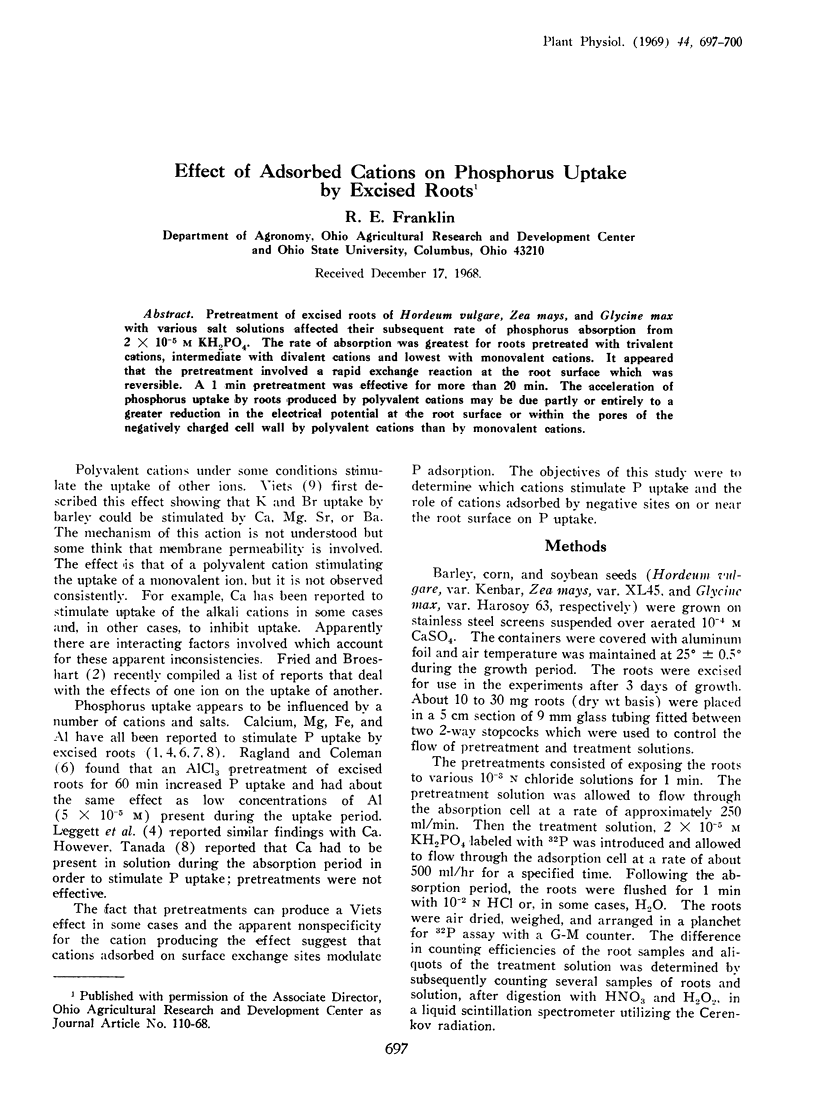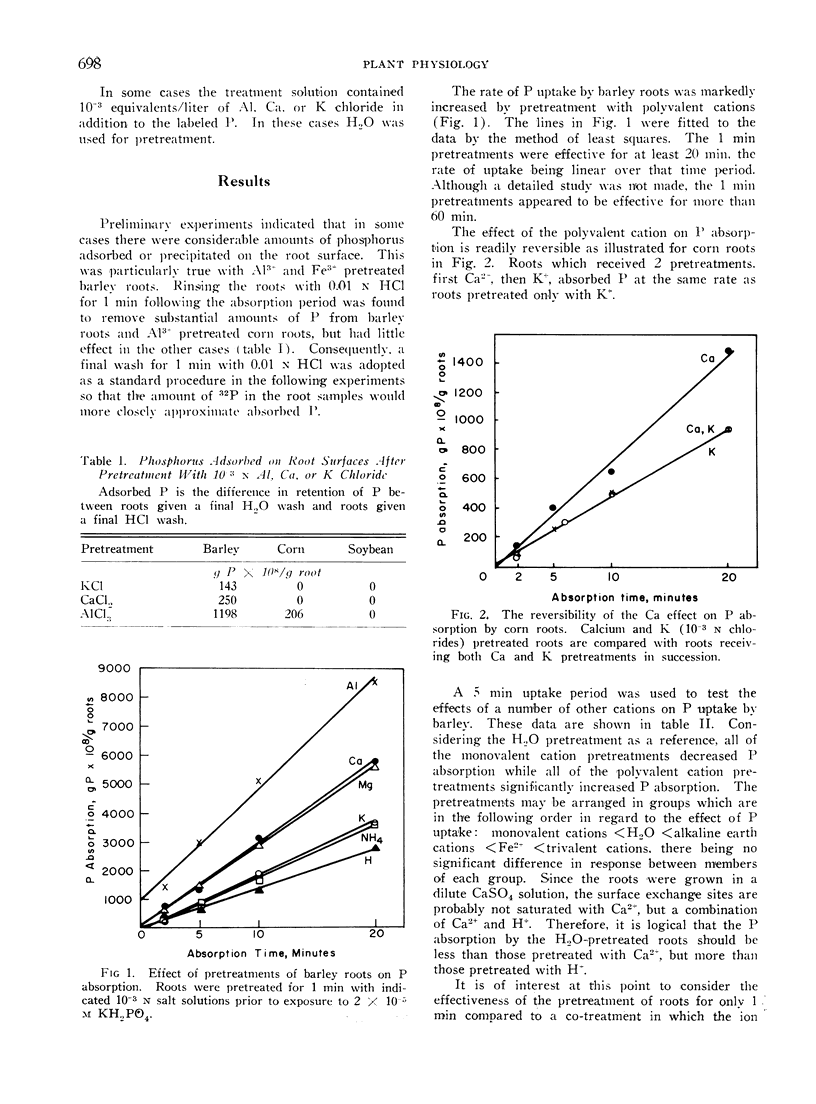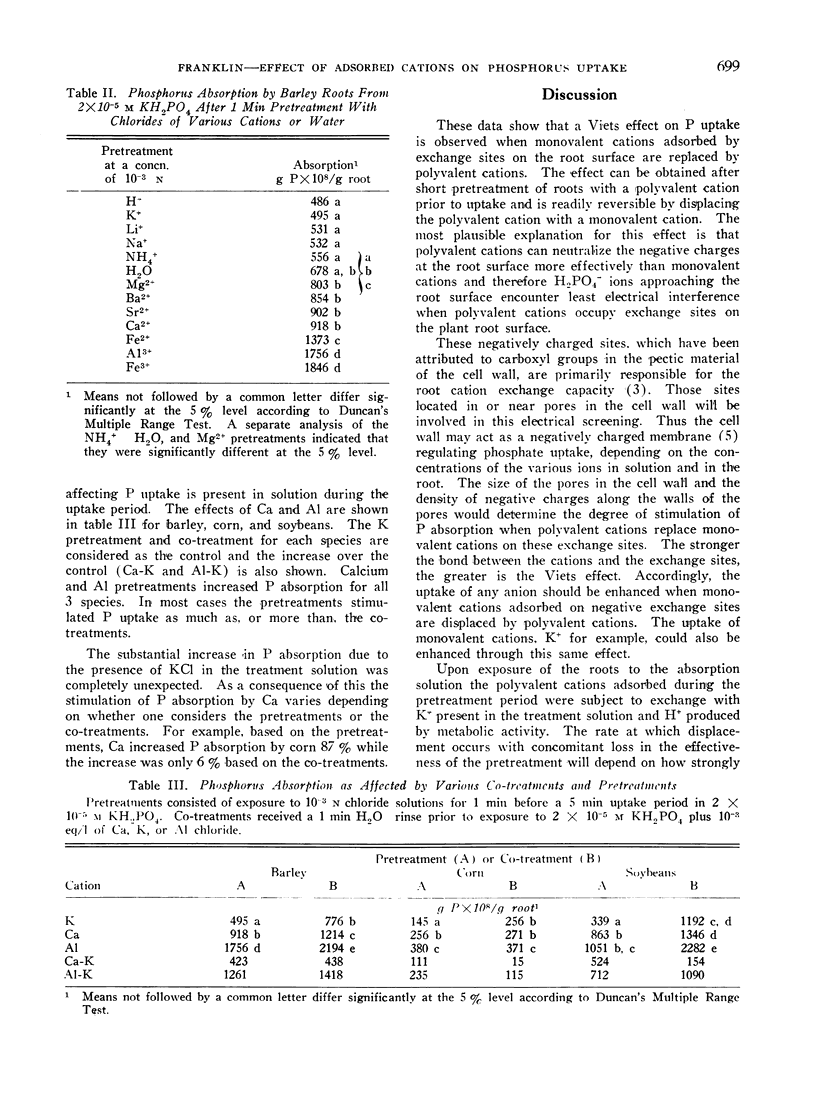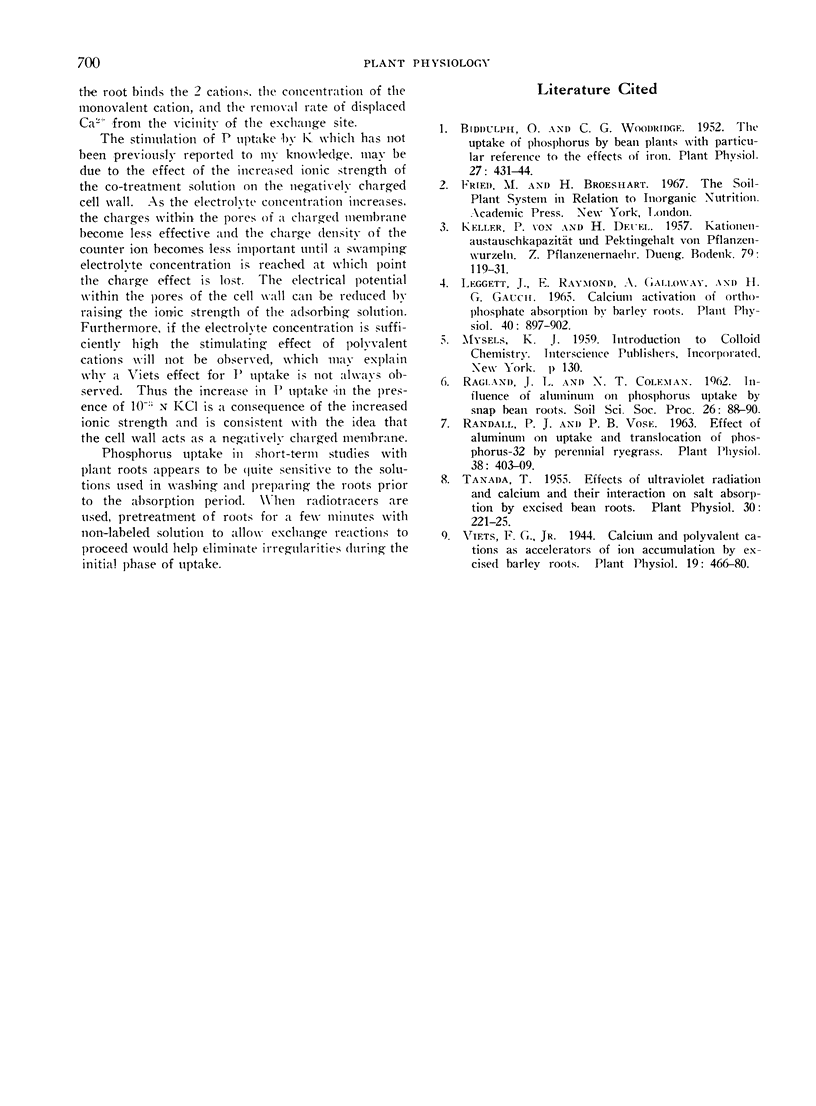Abstract
Pretreatment of excised roots of Hordeum vulgare, Zea mays, and Glycine max with various salt solutions affected their subsequent rate of phosphorus absorption from 2 × 10−5m KH2PO4. The rate of absorption was greatest for roots pretreated with trivalent cations, intermediate with divalent cations and lowest with monovalent cations. It appeared that the pretreatment involved a rapid exchange reaction at the root surface which was reversible. A 1 min pretreatment was effective for more than 20 min. The acceleration of phosphorus uptake by roots produced by polyvalent cations may be due partly or entirely to a greater reduction in the electrical potential at the root surface or within the pores of the negatively charged cell wall by polyvalent cations than by monovalent cations.
Full text
PDF



Selected References
These references are in PubMed. This may not be the complete list of references from this article.
- Biddulph O., Woodbridge C. G. THE UPTAKE OF PHOSPHORUS BY BEAN PLANTS WITH PARTICULAR REFERENCE TO THE EFFECTS OF IRON. Plant Physiol. 1952 Jul;27(3):431–444. doi: 10.1104/pp.27.3.431. [DOI] [PMC free article] [PubMed] [Google Scholar]
- Randall P. J., Vose P. B. Effect of Aluminum on Uptake & Translocation of Phosphorus by Perennial Ryegrass. Plant Physiol. 1963 Jul;38(4):403–409. doi: 10.1104/pp.38.4.403. [DOI] [PMC free article] [PubMed] [Google Scholar]
- Tanada T. Effects of Ultraviolet Radiation and Calcium and Their Interaction on Salt Absorption by Excised Mung Bean Roots. Plant Physiol. 1955 May;30(3):221–225. doi: 10.1104/pp.30.3.221. [DOI] [PMC free article] [PubMed] [Google Scholar]


